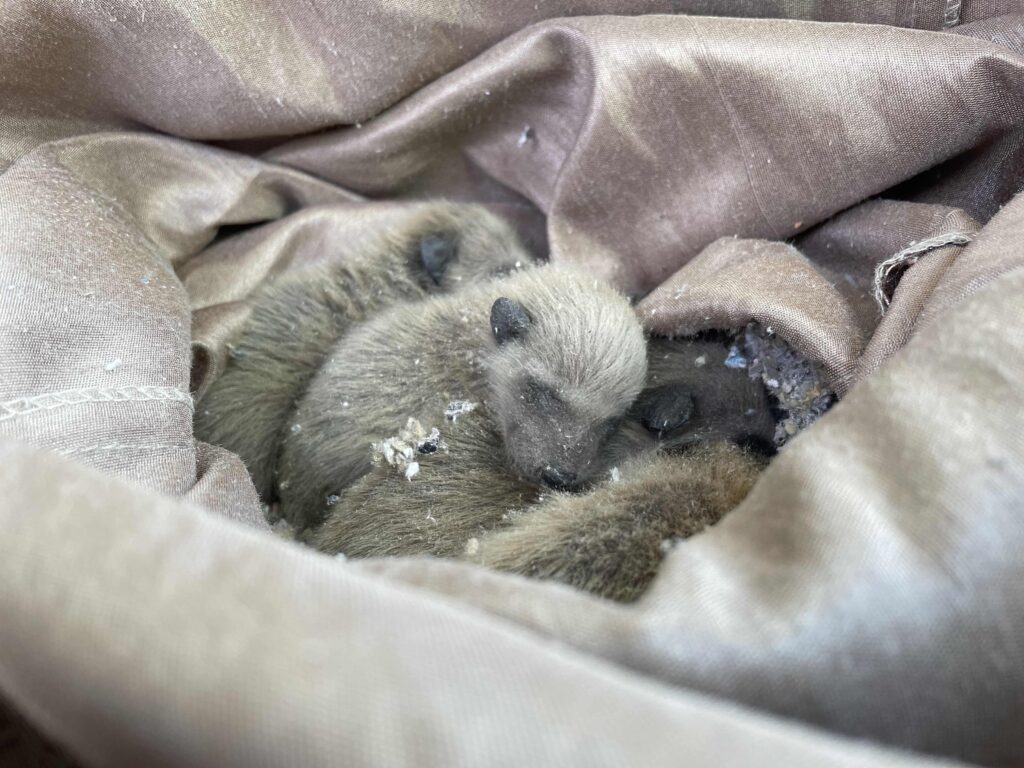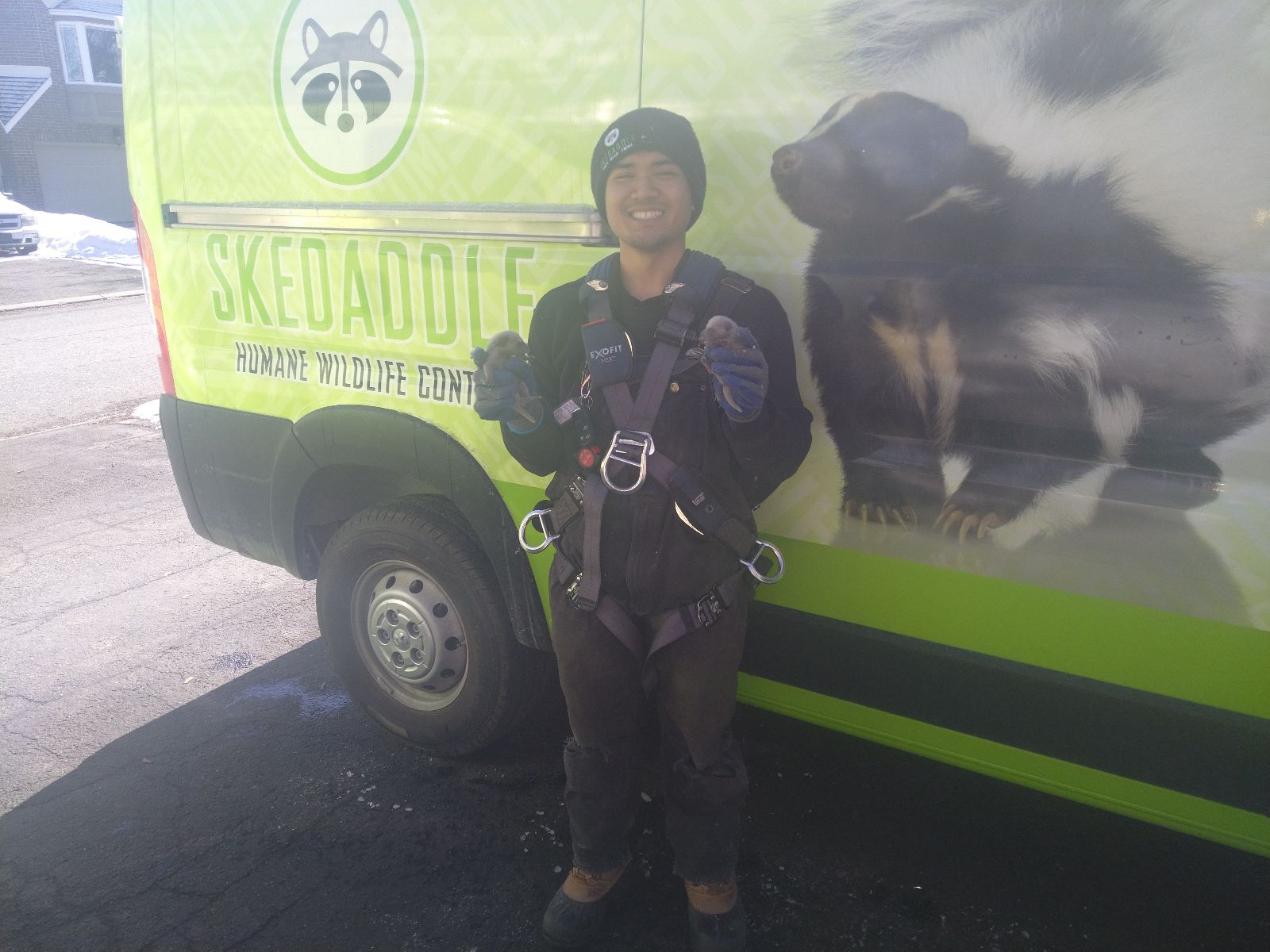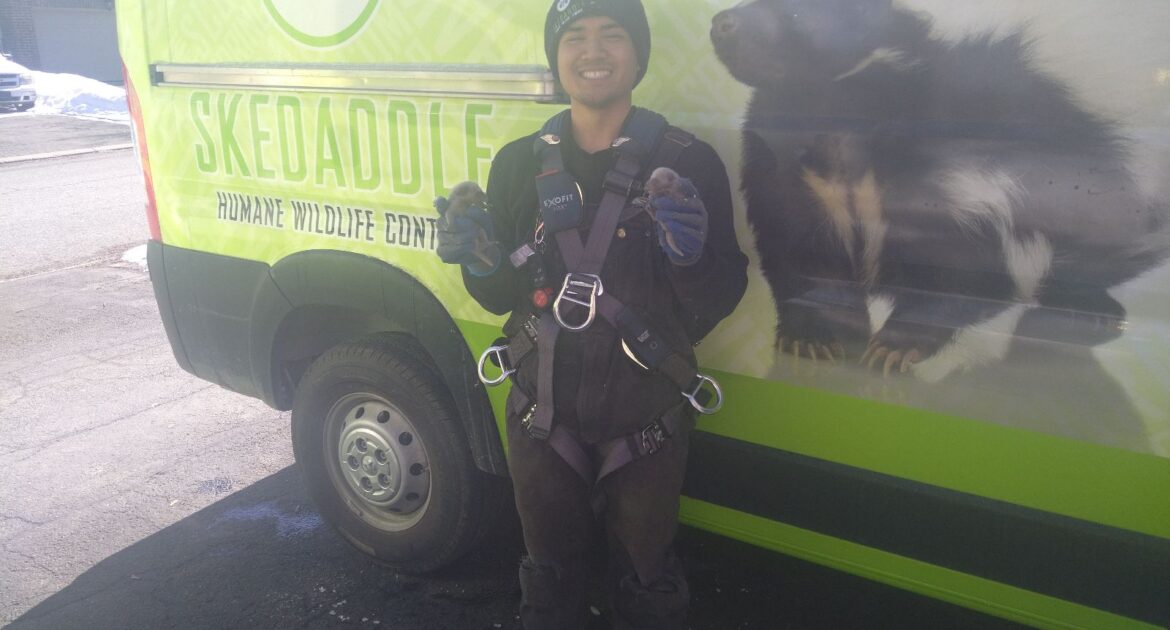Spring is the prime birthing season for many animals, and raccoons are no exception. Pregnant females typically give birth in early spring, and when they’re looking for safe dens to raise their babies in, attics make prime environments. The situation is not ideal for humans because raccoons often carry diseases and are notorious for damaging houses, so when you have baby raccoons in the attic, you need to call an expert for help with humane removal.
During this time of year, our team is removing babies from homes every single day, and in this particular case, Skedaddle technicians had the pleasure of removing two different litters of raccoons from the same neighbourhood on the same day.
First Call
Our team received the first call from a customer who claimed they could hear activity from the room. Our technicians Myo and Michael responded quickly. For this call, we sent out two technicians to ensure our newest hire, Micheal understood exactly how to handle the removal process.
After using thermal imaging cameras to identify the exact location of the raccoon and the babies, allowing for a concise removal. Once inside the attic, Myo quickly located five babies in the gable of the roof. He had to crawl on his stomach to remove insulation and reach the kits. Moving the insulation revealed that the mother raccoon was in the den as well, clearly prepared to defend her babies as she charged at Myo.
Mike took quick action and chose a snare pull to safely ensure the mother could not attack. The technique worked well enough to scare her into another cavity, leaving the babies long enough for Myo to carefully remove them one by one.
He used a grab pole to retrieve the babies from the bottom of the cavity. He then placed them into a heated reunion box where they could stay warm until they were returned to the mother, who exited the attic space after the removal was complete. Our technicians then placed the box on the roof where the mother raccoon could easily access her babies. Next, Myo and Micheal began the tedious cleaning process, removing the material the mother raccoon had used as bedding before sealing up all potential points of entry to keep the raccoon family from returning.
Myo and Micheal returned two days later to retrieve the reunion box and ensure that the babies were back with their mother.

Second Call
Very shortly after the first removal, we received the second call. Much like the first call, the homeowner described hearing noises from the attic space of her home. We dispatched the same two technicians to this location, which was only five minutes from the first.
To begin the removal process, Myo used a thermal scanner to pinpoint the location of the babies. The information allowed him and Micheal to locate nine kits in the attic. Mother raccoons often hide their babies in the hard-to-reach areas of an attic. Although two jobs may seem the same, the exact location of the mother, and the babies and the amount of damage in the area have an impact on how removal can be completed. Since there were nine babies in this litter, removal took more time. This meant creating a solution that allowed the technicians to have the time to remove the babies without a defensive mother attacking. While Myo handled the hand removal of the babies, Micheal ensured that the mother raccoon remained in a different part of the attic. This mother reacted the same way as the first and charged at our technicians, but they were able to get the babies in the reunion box safely one at a time and place it on the roof for the eager mother to retrieve. Once all the raccoons were safely removed, Myo and Micheal began cleaning all the areas inside the attic where the raccoon family had nested or left feces behind. For the final step, every entry point was sealed to prevent any future raccoon invasions.

Why You Should Call a Professional for Help
Removing baby raccoons is a tedious process. Without the proper tools and experience, you could accidentally harm the young animals, and if the mother is nearby when you attempt removal, she will likely attack you. It’s always a better idea to trust removal from a professional from Skedaddle.
As our wildlife technician, Myo explained “During this time of year mother raccoons can be aggressive when they are protecting their young. I and my fellow technician know exactly how to keep ourselves and the mother safe during removal with babies involved”.
Call Today for Help With Baby Raccoon Removal
When you have baby raccoons in your home, you want to remove them quickly to minimize the risk of the animals or your family getting hurt. Baby raccoons in Ottawa may be cute, but they are better off outside your house. Skedaddle Humane Wildlife Control promises to get baby raccoons out of your house without hurting them. Call us today to get help with baby raccoon removal.




